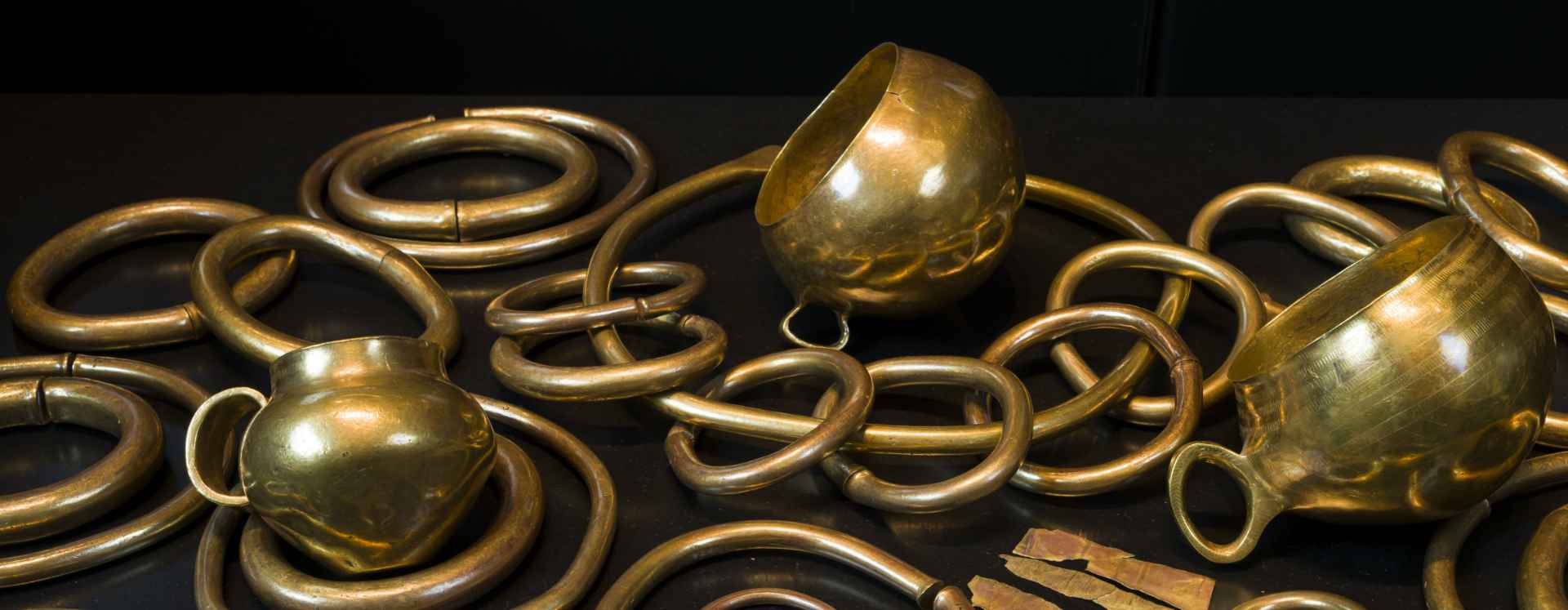Tesoro de Caldas de Reis (Treasure of Caldas de Reis)
The Treasure of Caldas de Reis, also known as the hoard of “As Silgadas”, is to date one of the largest known hoards of gold in European prehistory. The collection consists of forty-one pieces of high-purity alluvial gold, weighing approximately 15 kg.
It consists of the following pieces: one gold ring with blade-shaped terminals on the ends, twenty-seven ingot-type rings of varying shapes and weights, three bar fragments, two side-handled bowls, one side-handled jug, six decorated gold-plate fragments, and one comb or ornamental comb.
There are different hypotheses about the reason for its concealment, although given the quantity and diversity of the pieces, a strong case has been made that it is a hoard of valuable objects that may have been hidden to be remelted once they had become obsolete.
A hoard is a collection of different metallic materials that, for a variety of reasons, have been gathered together and laid out in a specific way in a strategic spot, normally on an old road.
The Treasure of Caldas de Reis was discovered by chance in the 1940s by some villagers who were carrying out farming tasks on the As Silgadas estate in Caldas de Reis, to which the treasure owes its name. Although the people who discovered it concealed their find and sold some of the pieces for their own profit, it’s estimated that the original collection weighed around 25 kg.
Label
More information
The pieces that make up this treasure were found hidden underground at a depth of about 20 cm. They were discovered arranged in groups and possibly in the same order in which they were buried, as they must have been originally stored in a container made of perishable material that hasn’t survived, such as a sack or a basket.
One of the most beautiful pieces is the comb or ornamental comb, both for its shape and for its incised decoration, reproducing models made in bone or wood.



